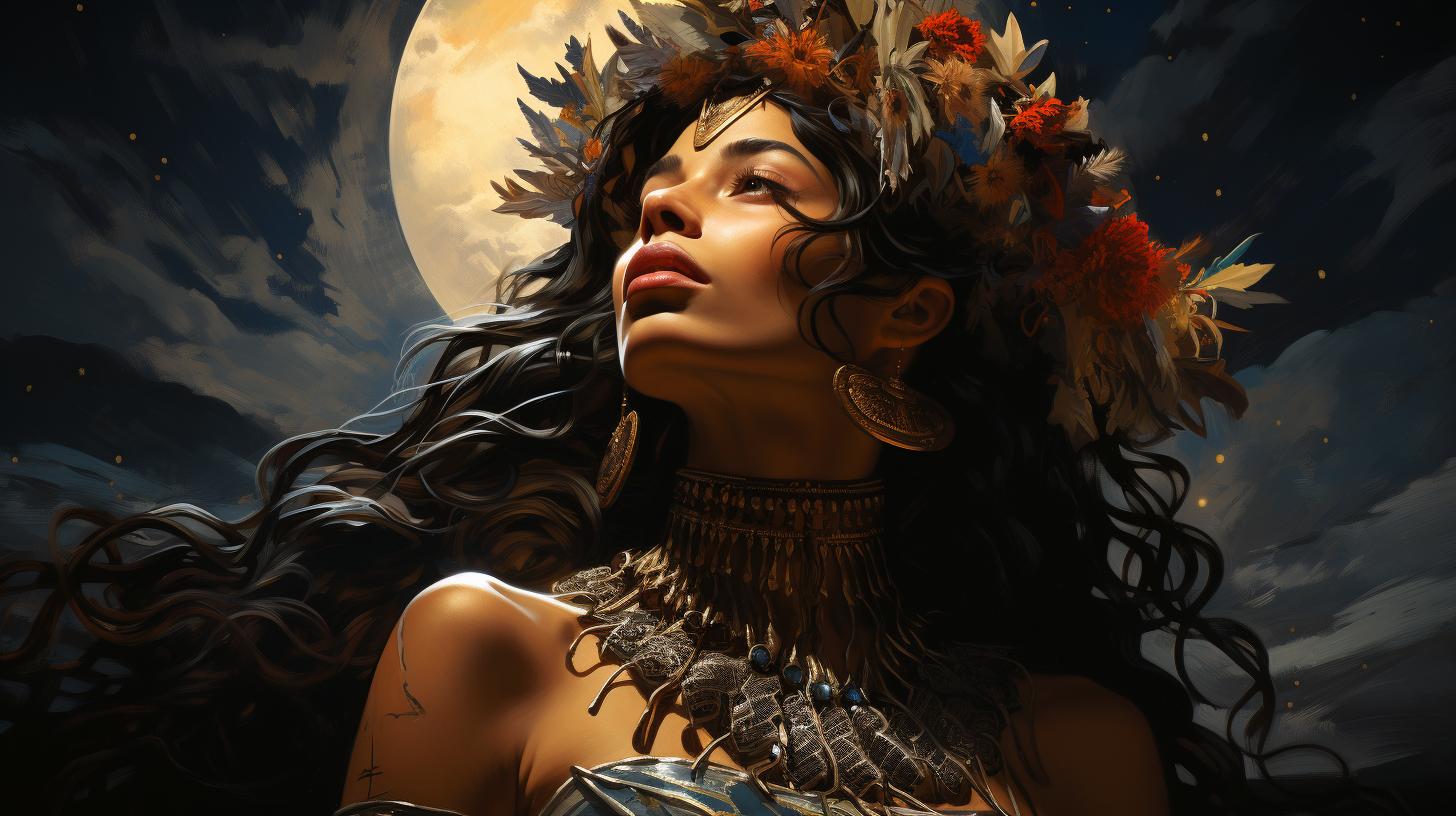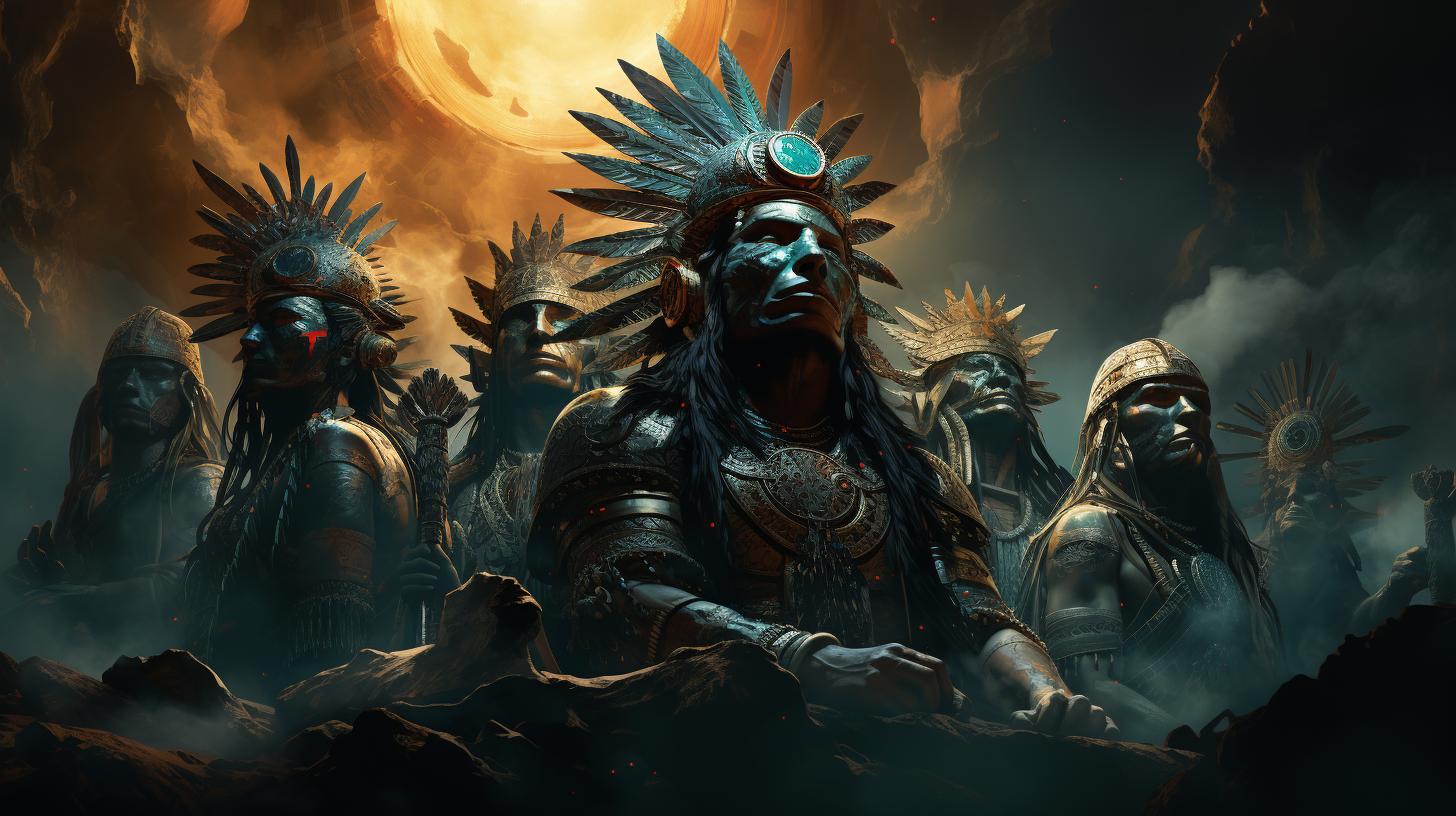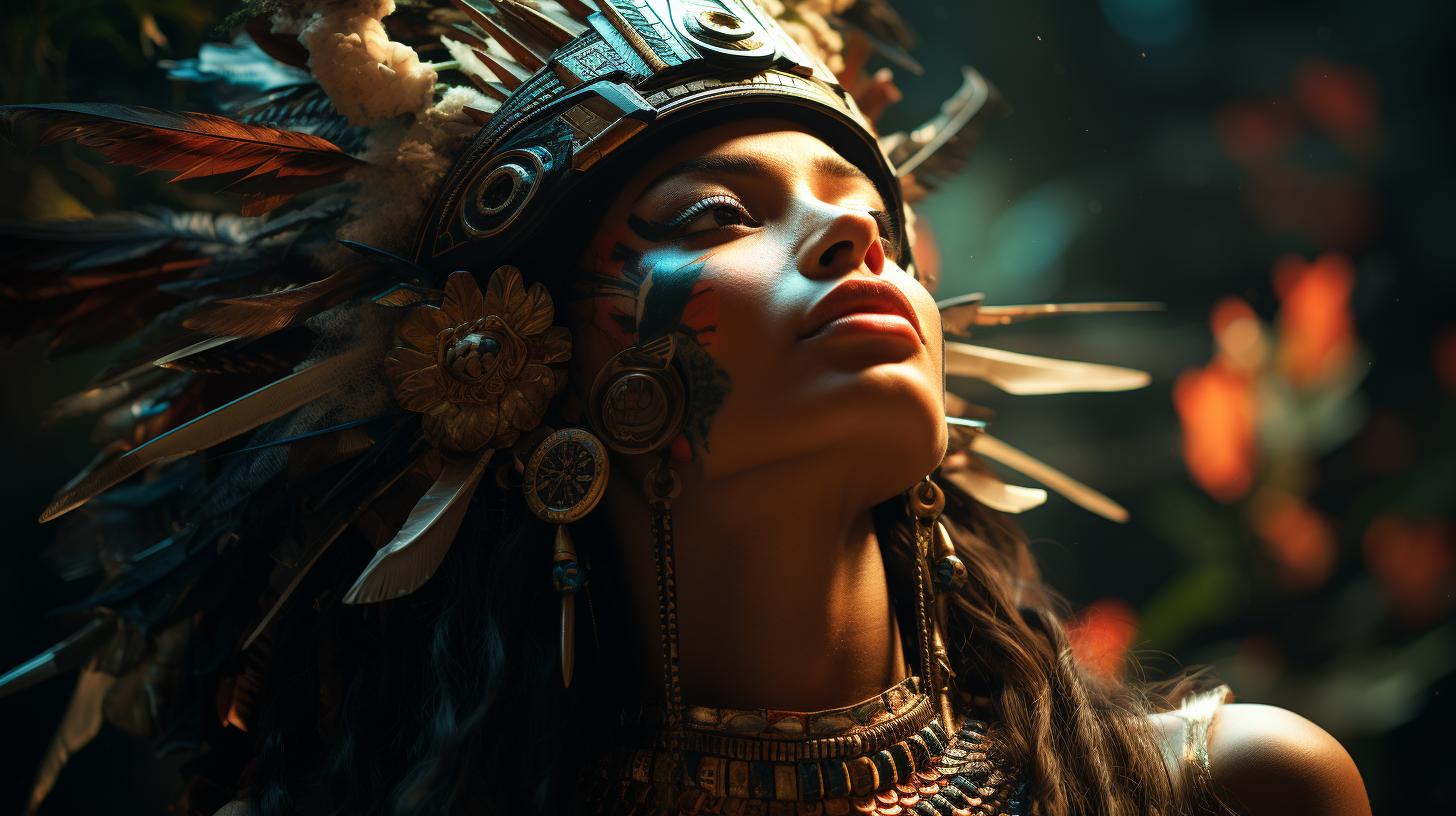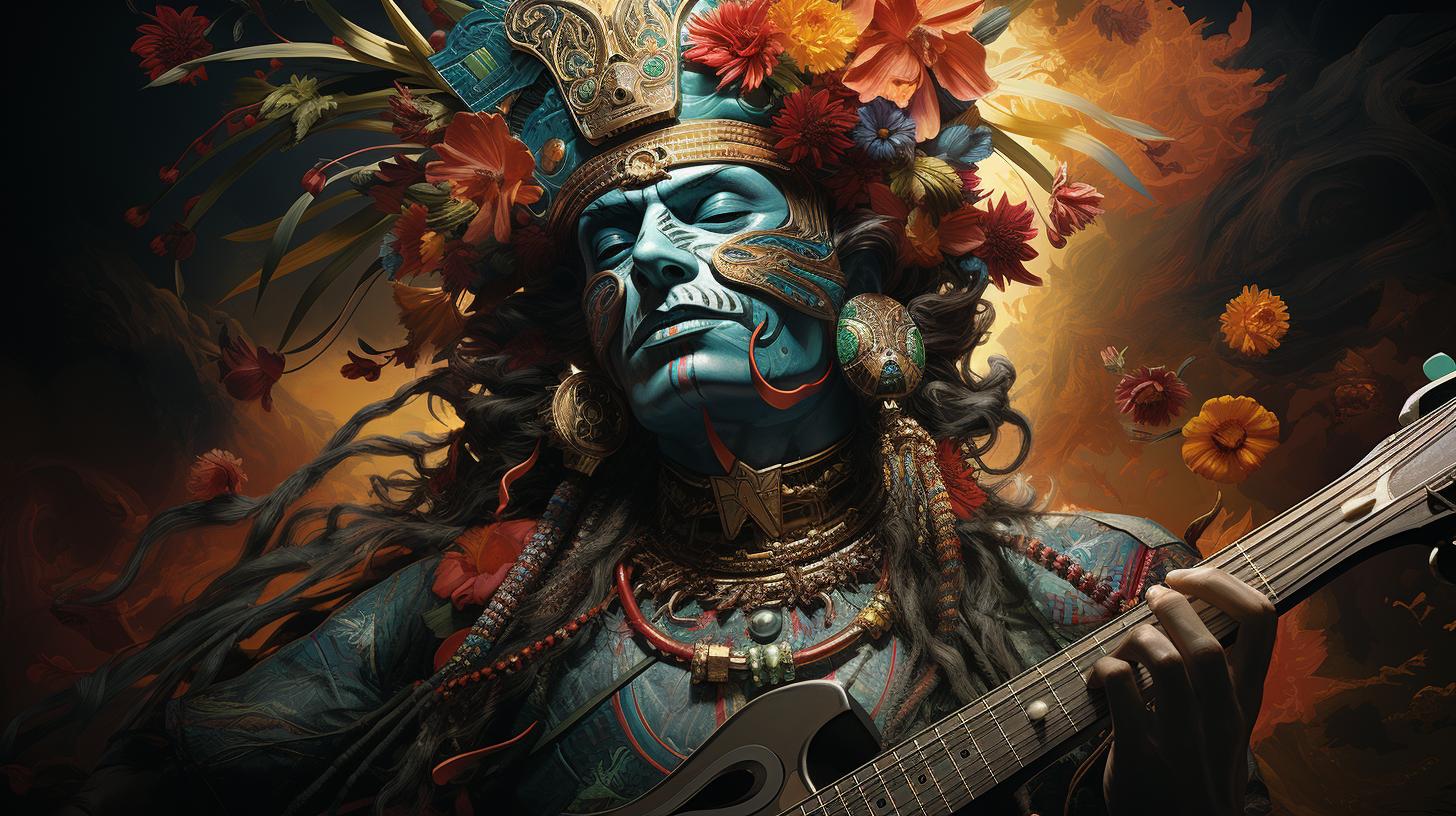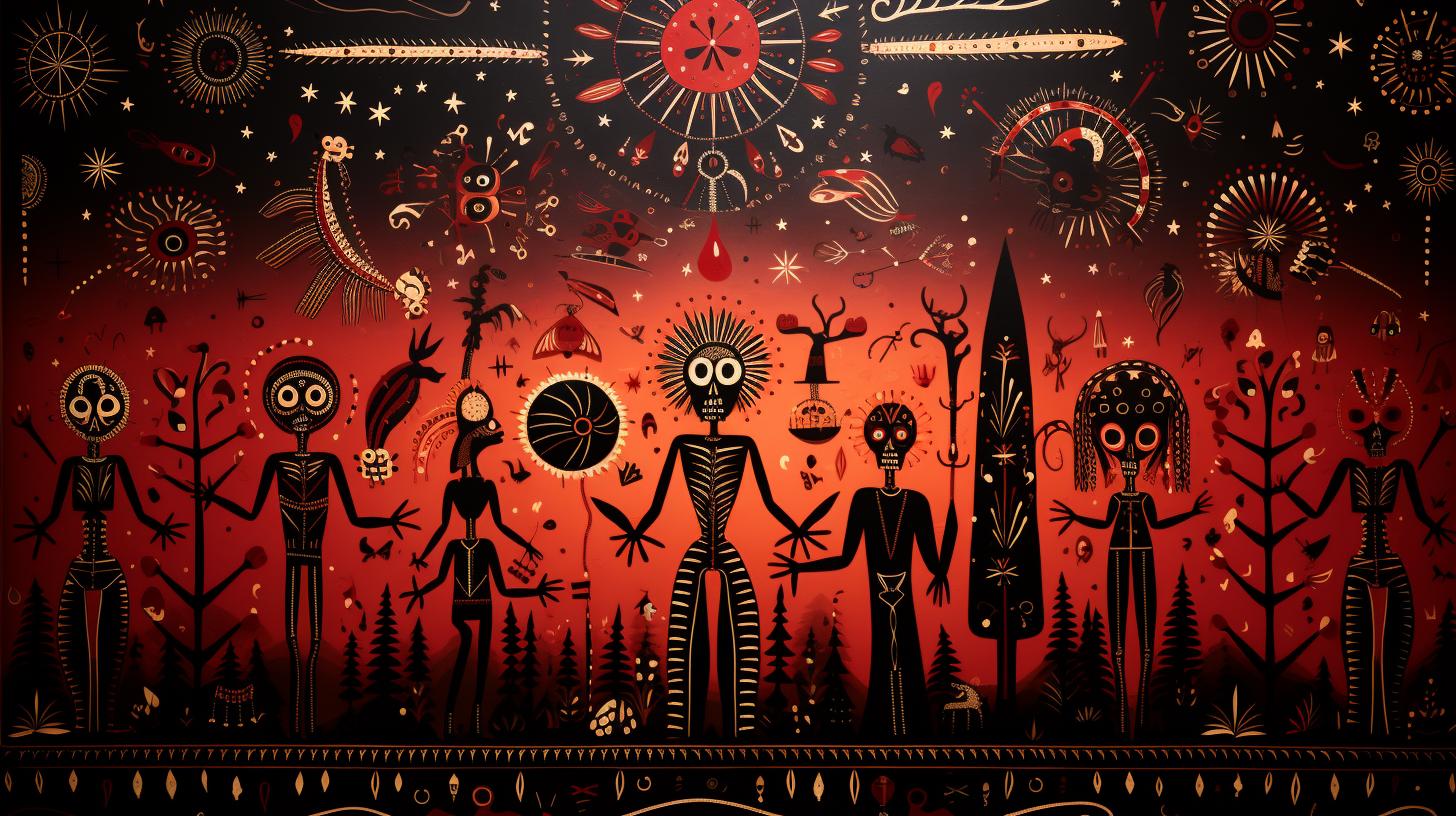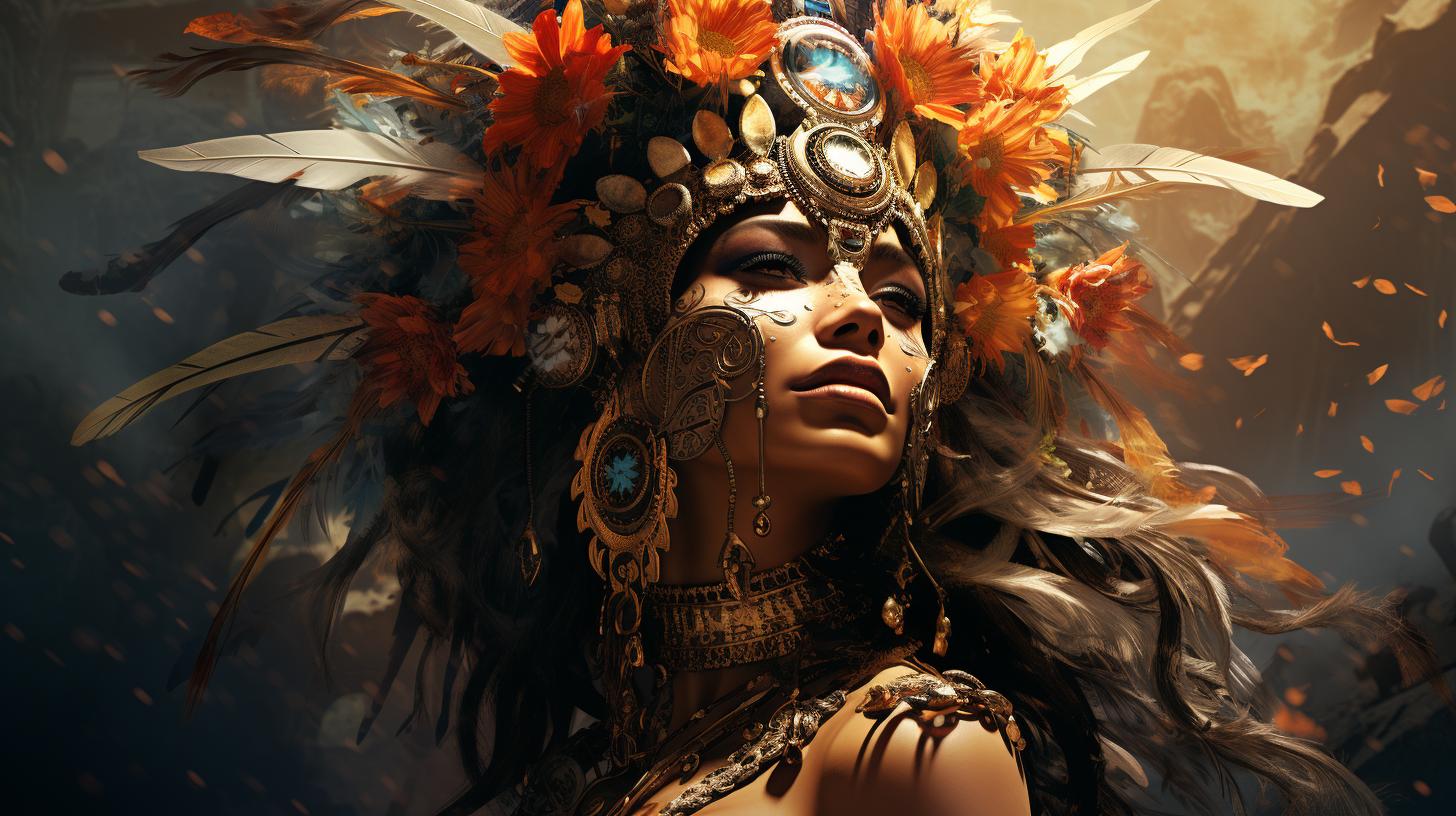Metztli: The Aztec Goddess of the Moon – Unveiling the Secrets of Ancient Aztec Mythology
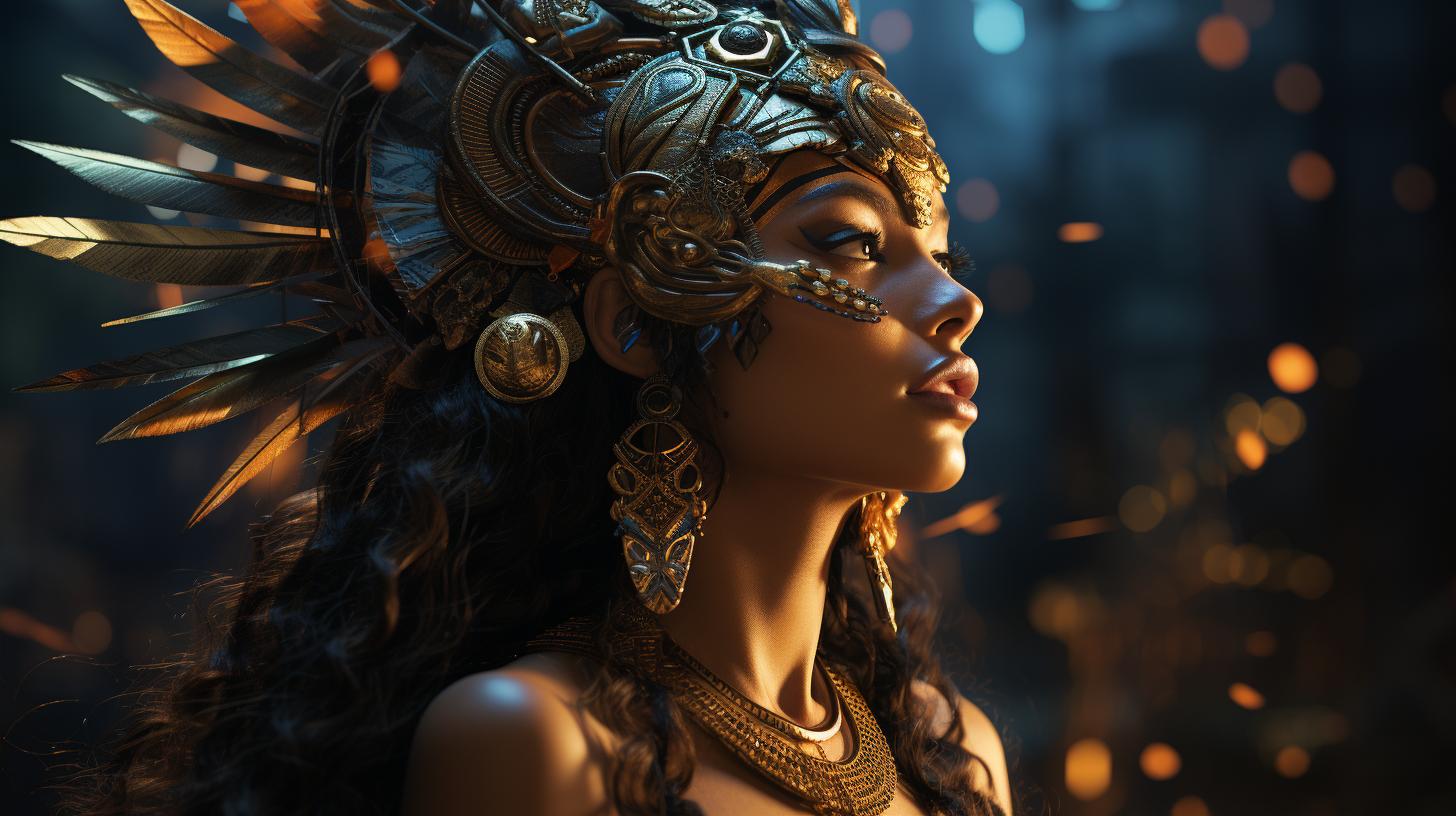
Metztli, the Aztec goddess of the moon, holds significant importance in Aztec mythology. Known as the sister of the sun god Tonatiuh, they collectively govern the balance between day and night, embodying the duality of life.
Metztli represents fertility, believed to possess the power to grant abundant harvests and healthy babies. In addition, she is connected to mysticism and magic, with the moon’s influence tied to witchcraft and enchantment.
This article explores Metztli’s mythology, symbolism, worship rituals, and the intriguing journey that led her to becoming the goddess of the night.
Exploring the Mythology of Metztli
Metztli, the Aztec goddess of the moon, played a significant role in Aztec mythology and was revered for her powers and attributes. Let’s delve into the fascinating mythology surrounding Metztli and explore her various roles and journeys.
Metztli’s Role as the Sister of the Sun God Tonatiuh
One of the prominent aspects of Metztli’s mythology is her close connection to Tonatiuh, the Aztec god of the sun. As the sister of Tonatiuh, Metztli shared a symbiotic relationship with him, representing the balance between day and night.
Together, they governed over the celestial bodies and guided the cycles of light and darkness.
The Dual Powers of Metztli: Fertility and Darkness
Metztli embodied the dual aspects of fertility and darkness, representing the intricate balance between life and death. As a fertility goddess, she was believed to bring abundance and prosperity, granting bountiful harvests and healthy offspring.
However, there was also a darker side to Metztli’s persona, associating her with witchcraft and mysticism. The moon’s influence on magic and its connection to practices of sorcery attributed Metztli with the power to cause illness, madness, and even transform humans into animals.
Metztli’s Journey to the Underworld and Becoming the Goddess of the Night
A captivating tale from Aztec mythology narrates Metztli’s heroic journey to the underworld. She descended into the depths of the underworld to rescue her brother, Tonatiuh, who had been held captive by the gods of the underworld.
However, despite her efforts, Metztli failed to bring him back, ultimately becoming trapped herself. From that moment onwards, she transformed into the goddess of the night, forever separated from her brother, who remained the sun god.
The story of Metztli’s journey serves as a poignant reminder of the sacrifices and challenges faced by divine beings in Aztec mythology. It underscores the significance of Metztli’s transformation into the embodiment of the night and the enduring power she holds over darkness and mystery.
Symbolism and Worship of Metztli
Metztli, the Aztec goddess of the moon, holds great symbolism and significance in Aztec culture. She is revered for her association with fertility and harvest, as well as her influence on celestial events like eclipses.
Her worship involves various rituals and offerings to honor her divine presence.
Metztli’s Association with Fertility and Harvest
Metztli is deeply tied to fertility and agricultural abundance. Aztecs believed that her blessings could ensure a bountiful harvest and the growth of healthy crops. Farmers and communities offered tributes to Metztli, including food, flowers, and symbolic objects, to seek her favor and ensure the prosperity of their land.
Rituals and Offerings to Honor Metztli
Aztec ceremonies dedicated to Metztli involved elaborate rituals and offerings. Communities gathered to perform dances, prayers, and chants in honor of her divine power. They presented sacred items and delicacies as offerings, demonstrating their devotion and seeking her protection and blessings.
The rituals often took place in designated temples or sacred sites dedicated to Metztli. Aztec priests played a crucial role in leading these ceremonies, guiding the community in their expressions of reverence and gratitude towards the moon goddess.
Metztli’s Influence in Eclipse Ceremonies
Metztli’s connection to celestial phenomena, particularly eclipses, held great significance in Aztec belief. During lunar eclipses, special ceremonies were conducted to placate Metztli and avert any negative effects associated with the moon turning red.
These events involved communal prayers, fire rituals, and the offering of sacred objects to ensure the moon’s return to its natural state and maintain the harmony within the Aztec cosmos.
Aztec priests and astronomers closely observed celestial movements and used their knowledge to forecast lunar eclipses, allowing communities to prepare and perform the necessary rituals in time.
Metztli’s worship and the recognition of her influence during eclipses showcased the Aztecs’ fascination with celestial phenomena and their deep connection to the natural world.
Metztli, the Aztec goddess of the moon, remains a revered figure in Aztec culture, symbolizing fertility, abundance, and the mystical forces of the night sky.
The rituals and traditions associated with her worship have persisted through generations, continuing to honor her powerful presence and the integral role she played in Aztec mythology and beliefs.
Unraveling the Meaning and Pronunciation of Metztli
Metztli’s Etymology and Interpretation
Metztli, the Aztec goddess of the moon, holds a deep cultural significance with a name rooted in the Nahuatl language.
Derived from the word “metztli,” meaning “moon,” her name highlights her role as the divine embodiment of lunar power. The interpretations of Metztli vary, but common associations include fertility, magic, and the dualistic nature of light and darkness.
Exploring the etymology of Metztli allows us to delve into the symbolism and significance behind this revered Aztec deity.
Symbolism of Metztli
– Fertility: Metztli is often connected with the fertility of the land and the ability to bestow abundant harvests.
– Magic and Witchcraft: Due to her association with the lunar cycle, Metztli was also believed to have powers related to mysticism, magic, and witchcraft.
– Dualism: Metztli embodies the dichotomy of light and darkness, symbolizing the cycles of life, death, and rebirth.
Interpretations of Metztli
– Divine Feminine: Metztli represents the power and influence of women in Aztec society, particularly in matters of fertility, childbirth, and agricultural abundance.
– Lunar Deity: As the goddess of the moon, Metztli represents the celestial realm, casting her ethereal light upon the Earth and guiding the cycles of nature.
– Honoring Ancestors: Metztli’s significance extends beyond her role as a lunar deity, as she is also revered as a guardian of the ancestral spirits, offering protection and wisdom to those who seek it.
Pronunciation Guide for Metztli
In the Nahuatl language, the pronunciation of “Metztli” is [metz-tlee]. To properly pronounce her name, emphasize the “metz” with a short “e” sound, followed by a quick “tlee” sound. Remember to softly articulate the “tl” sound, which is characteristic of many Nahuatl words.
Pronouncing Metztli’s name accurately ensures that her essence is respectfully acknowledged and honored in conversations and rituals.
Now that we’ve explored the etymology, interpretations, and pronunciation of Metztli, we have gained a deeper understanding of the rich cultural significance and mystical aura that surrounds the Aztec goddess of the moon.
Join us as we continue our journey into the captivating world of Aztec mythology and unveil the enigmatic stories and beliefs that continue to shape our understanding of ancient civilizations.
.

